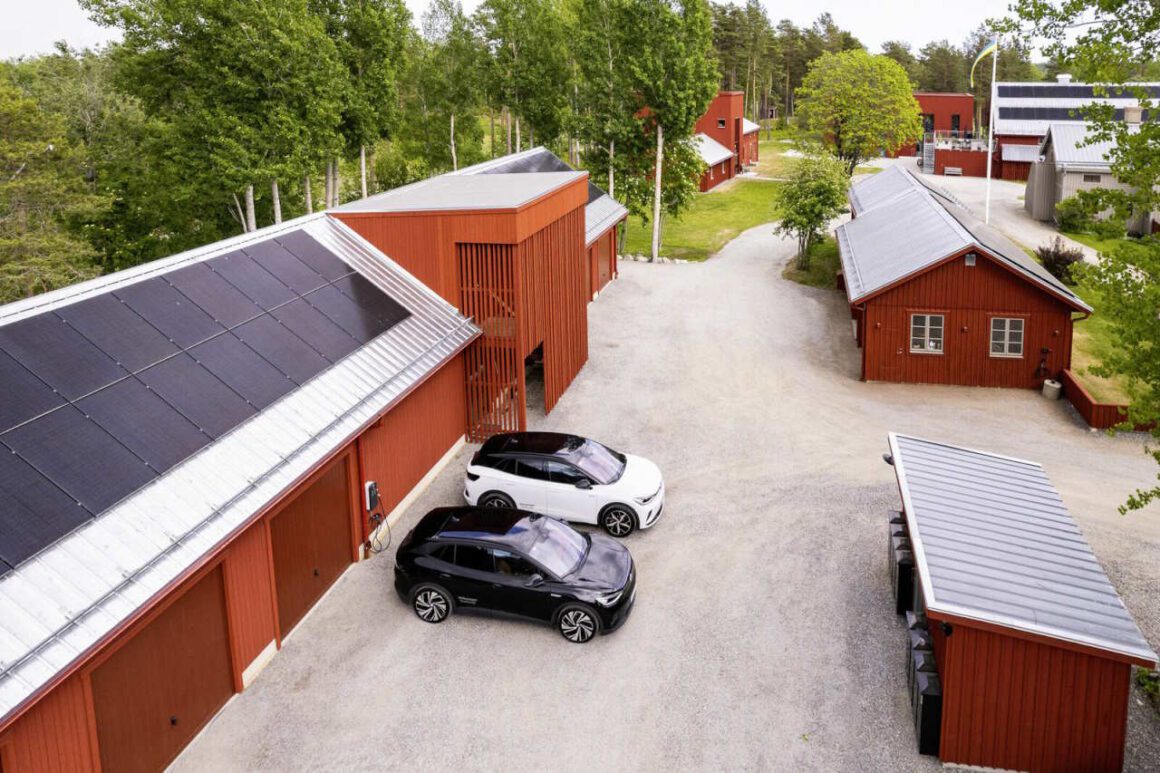German automotive giant Volkswagen has announced that its all-electric ID. family of cars will now offer bidirectional charging with Vehicle to Home (V2H) functionality – claiming to be one of the first to offer the technology through the CCS DC charging standard now used by most EV makers.
The company plans to offer bidirectional charging in all new models with a minimum 77kWh battery, and is already rolling out a trial at a Swedish farm that is being transformed into a sustainable housing development.
Many car makers offer a basic vehicle to load facility from their EVs by offering a simply power point in the car that can power tools and appliances. The V2H takes this to the next step and integrates the EV battery with the home solar and battery system, with full Vehicle-to-grid (V2G) technology that can send power back to the grid to be the next step.
“The bidirectional charging function in the ID. models in combination with the DC charging technology is a dynamic extension of the home storage system,” the company says.
“This takes over the main energy supply for the house. The vehicle is activated by the home power station when the home storage system requires additional energy.
“As soon as the home storage system is recharged, the vehicle stops transferring energy and goes into standby mode. This means that the ID. is only activated when additional energy is required.”
In Germany, the V2H functionality will only be available for customers with the integrated Home Energy Management System (HEMS) from Volkswagen partner HagerEnergy, and to those vehicles with a big enough battery and with the ID. Software 3.5.
Assuming an average household consumption of approximately 30kWh, the 77kWh battery can supply electricity for around two full days, though the battery cannot be discharged below 20% state of charge in such uses.
In the future, VW expects ID. Family models to also be able to provide power to stabilise the electricity grid, which required vehicle to grid (V2G) technology.
The company says the technology will turn the car into a “rolling energy storage”, or a battery on wheels.
It means a house can be supplied with solar power over several cloudy days or in the evening when the sun has set and the photovoltaic system is no longer supplying electricity. Customers can decide for themselves when they want to draw energy from the public grid or use the self-generated electricity stored in the vehicle battery.
“We are actively shaping the energy transition with products and services centered around the electric car: With the bidirectional charging function that is now available, we have tailored a new service offering to the needs of our customers,” said Imelda Labbé, Volkswagen board member for sales, marketing and after sales.
“Not only can they save energy costs, but they are also making an important contribution to the sustainable use of energy.”
The technology is already being trialled at the Stenberg housing estate in Hudiksvall, Sweden, which is based around a 350-year farm that has been remodelled by Swedish entrepreneur, Klas Boman, in the hope of locking in its sustainability for another 350 years.

“Stenberg is a once-in-a-lifetime project,” said Boman.
“When we decided to realise ‘the other 350-year project’, energy and the environment were key. Every decision was made with these aspects in mind. The use of electric vehicles as energy storage was considered from the outset.
“Thankfully, Volkswagen joined the project in April 2021 and we are now ready to go. This will be one of the biggest changes in the energy market.”
Joshua S. Hill is a Melbourne-based journalist who has been writing about climate change, clean technology, and electric vehicles for over 15 years. He has been reporting on electric vehicles and clean technologies for Renew Economy and The Driven since 2012. His preferred mode of transport is his feet.

